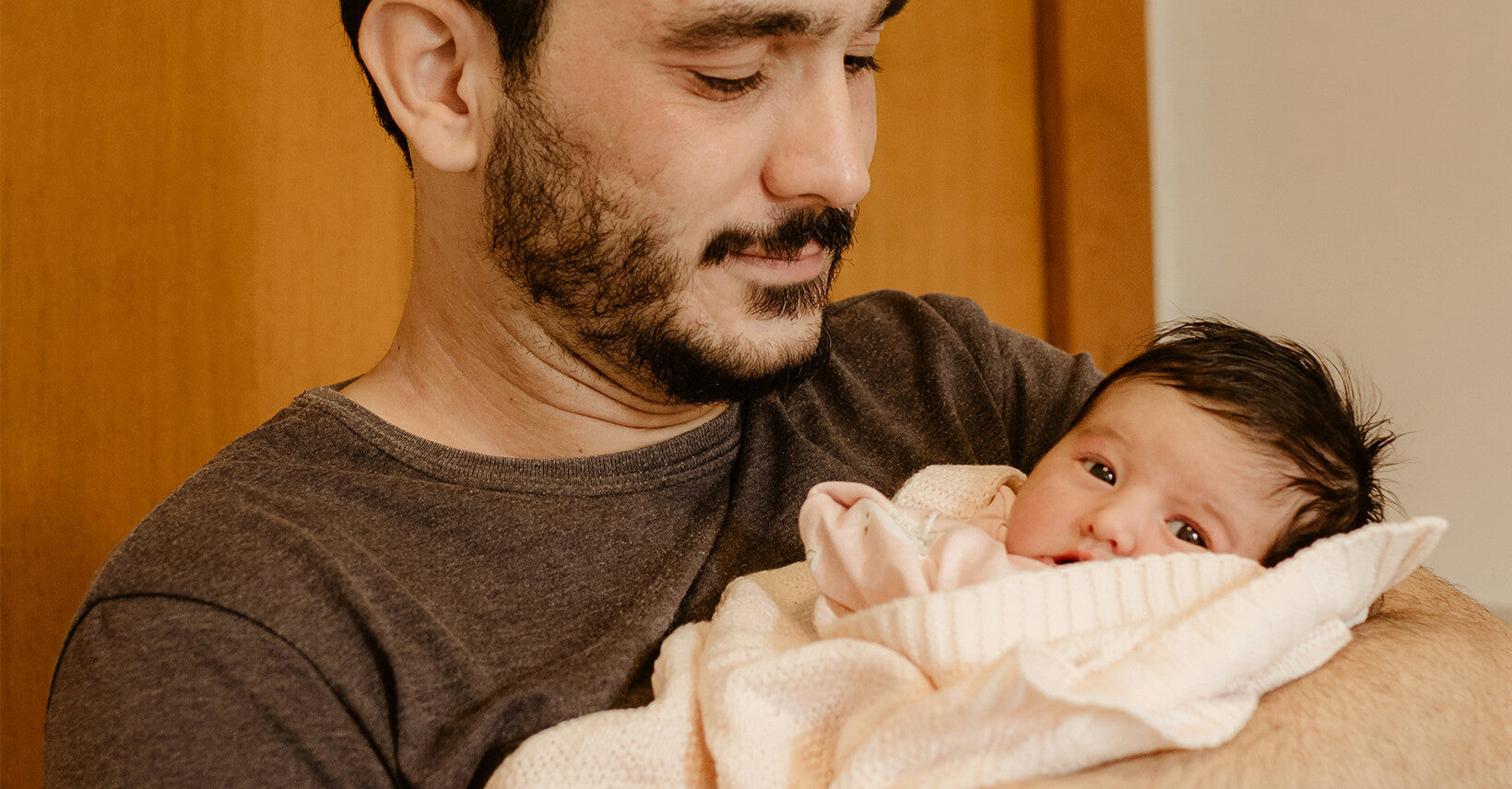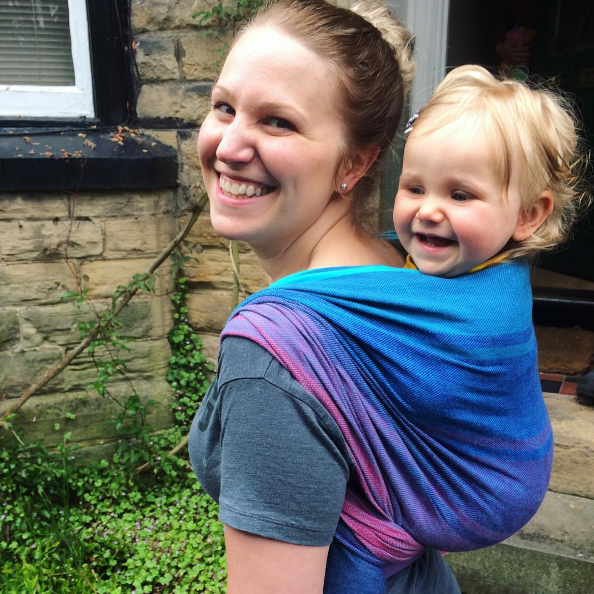


For many new parents or caregivers, holding babies can be a stressful and fresh experience. The way you hold and support your little one can be intimidating but don't worry. With a little guidance and practice, everyone can hold their babies safely and comfortably.
Today's guide will teach you how to hold your little one safely.
For new caregivers, mastering various ways to hold your baby can be exciting. Below we'll explore a variety of baby-holding positions, each with their own benefits and appropriate for different situations. Whether you're a new parent, an experienced caregiver, or just eager to learn, mastering these positions will not only promote a strong bond between you and your baby but also ensure their maximum comfort and safety. So let's explore some typical holding positions as below.
The cradle is a classic holding position that involves the parents holding the baby's head with one arm and supporting the baby's hips with the other arm. It is a comfortable and secure hold that mimics the feeling of being in a cozy nest, providing comfort and closeness for both parents and babies.
:max_bytes(150000):strip_icc()/GettyImages-525445651-56bfa9913df78c0b138e69c1.jpg)
In the football hold, the parents place the baby's body next to his or her arm and support the baby's head with his or her hand. This position is especially helpful for babies who have difficulty suckling during breastfeeding because it provides the parents with better vision and control.

With the shoulder hold position, the infant rests on the parent's shoulder with the head supported by the hand or arm. This position is often used to burp or soothe an infant after feeding, and the parents can easily pat or rub the infant's back to aid in digestion.

Lap hold involves sitting down and holding your baby in your lap with your hands supporting your baby's head and hips. This is a relaxed and intimate position that is perfect for cuddling while providing stability and security for your baby.

Similar to the cradle hold, but with a twist, the cross-cradle hold involves holding the baby's head with the opposite arm and supporting the baby's hips with the other arm. This position provides extra support for the baby's head and neck, making it a popular choice for breastfeeding or soothing an irritable baby.

Holding the baby upright on the parent’s chest or shoulders is called upright holding. This position allows the baby to see the world around them while feeling the warmth of their parents.

Inspired by kangaroo care, the kangaroo hold involves holding an infant's skin against the parent's bare chest. This position promotes bonding, regulates the infant's body temperature, and even helps stabilize the infant's heart rate and improve their breathing pattern.
Source:
https://my.clevelandclinic.org/health/treatments/12578-kangaroo-care
:max_bytes(150000):strip_icc()/GettyImages-1583963575-335d780dd5f34aa2bb5d7d5709c1dc70.jpg)
Using a baby sling or carrier, parents can hold the baby close to their arms while freeing their hands. This position promotes bonding and allows parents to move around while keeping the baby safe and content.

Back hold is suitable for larger infants with good head and neck control, the back position involves carrying the infant on the parent's back using a specialized strap or wrap. This position provides a different perspective for the infant and allows the parents to participate in activities while keeping the infant close and secure.

When bottle feeding, there are some tips you should pay attention to:
If you want to calm a crying baby, it can be helpful to hold them close to your chest. Below is an approximate guideline:
It is important to provide gentle support and comfort when holding a colicky baby. Holding your baby upright on your chest can help ease the discomfort associated with flatulence. You can also try laying your baby across your forearms and gently rubbing or patting their back to help release trapped gas. Try different holding positions to see which one relieves your baby's discomfort the most. Creating a calming environment with soft lighting and soothing sounds will also help to relax both your baby and yourself.
When holding a gassy baby, it's best to keep them upright to help ease the discomfort. Hold your baby on your chest with their head resting on your shoulder. Gently pat or rub your baby's back in a circular motion to promote burping and release trapped gas. You can also try laying your baby across your lap and gently rubbing their back to help them expel gas. Try different holds to find the position that works best for your baby. It's also important to burp your baby frequently during and after feedings to prevent gas buildup.
It is important to find a position that is comfortable for both mother and baby when holding the baby while breastfeeding.
Mothers can use the cradle hold, where they support the baby's head with their arms and the baby's body faces the mother.
Another way to hold the baby is in a football hold, where the baby is held under the armpits with the body close to the mother. Make sure the baby's mouth is aligned with the nipple for proper sucking. Use pillows or cushions for support if necessary and make sure the mother is relaxed to promote milk flow. Adjust the position as needed until both mother and baby are comfortable during breastfeeding.
When holding a refluxing baby, be sure to keep them in an upright position to prevent spitting up and discomfort. Keep your baby against your chest with their head slightly above their stomach. This is done by resting your baby on your shoulder or having them sit on your lap with support. Avoid laying your baby flat on their back immediately after feeding to reduce the likelihood of reflux symptoms. Burping your baby frequently during and after feedings can also help ease reflux symptoms. Try different holding positions to find the most comfortable position for your baby to reduce reflux episodes.
In short, holding a baby requires gentleness and consideration. Whether bottle feeding, calming a crying baby, dealing with colic or flatulence, or breastfeeding, the key is to provide support while being mindful of the baby's comfort and safety. It is important to find the most appropriate holding position for both the baby and parents and adjust as needed to ensure a positive experience for everyone.

Lily Hou
An expert in sleep sack design, is a valued contributor to Kaiya Baby's blog. With a strong background in baby sleep bags and maternal care, she is highly regarded for her professionalism. Lily prioritizes baby comfort and safety in her designs, using high-quality materials. Her insightful articles on sleep bags have been featured in reputable publications and have gained a significant readership. Trust Lily to help you create a comfortable and safe sleep environment for your baby, backed by her proven track record in the industry.
Leave a comment
This site is protected by hCaptcha and the hCaptcha Privacy Policy and Terms of Service apply.